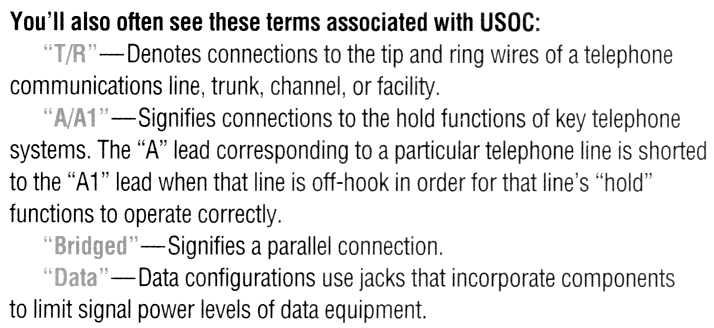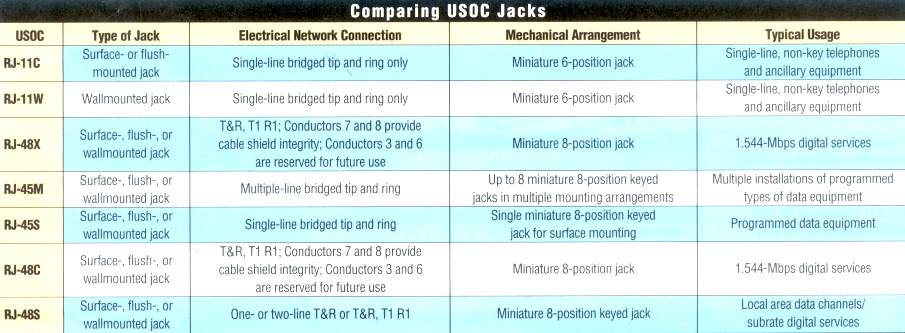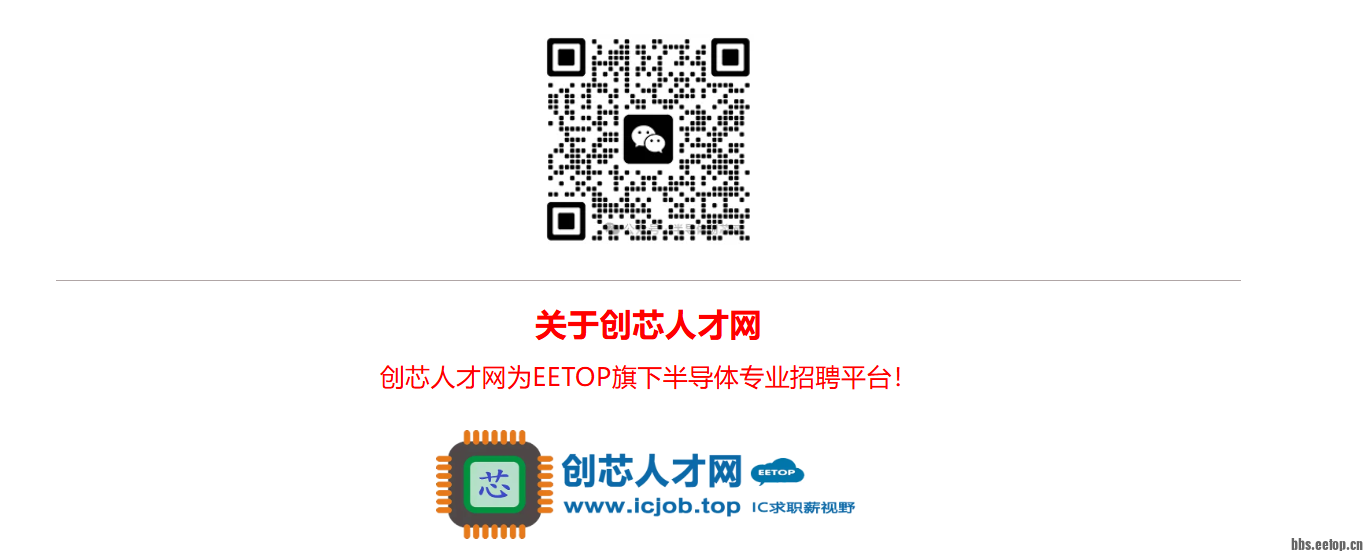日志
RJ48C, RJ48S, RJ48X - Jacks
|
RJ48 is a registered jack. It is used for T1 and ISDN termination and local area data channels/subrate digital services. It uses the 8 position modular connector.
| Pin | Pair | Signal |
|---|---|---|
| 1 | R | RX Ring |
| 2 | T | RX Tip |
| 3 | reserved | |
| 4 | R1 | TX Ring |
| 5 | T1 | TX Tip |
| 6 | reserved | |
| 7 | shield | |
| 8 | shield |
RJ48C is commonly used for T1 lines and uses pins 1, 2, 4 and 5.
RJ48X is a variation of RJ48C that contains shorting blocks in the jack so that a loopback is created for troubleshooting when unplugged by connecting pins 1 and 4, and 2 and 5.
RJ48S is typically used for local area data channels/subrate digital services, and carries one or two lines. It uses a keyed variety of the 8P8C modular connector.
RJ48 connectors are fastened to STP (Shielded Twisted Pair) cables, not the standard UTP (Unshielded Twisted Pair) CAT-(1-5).
------------------------------------------------------------------------------------------------------------------------------------------------------------------------------------------------------------------------------------------------
Typical use: DS1/T1 circuit hand off
.
Pins 1 & 2 CSR Receive from Network
Pins 4 & 5 CSR Trnasmit to Network
RJ-48C Does not place circuit into a mechanical loopback upon removal of
customer supplied 8 pin modular plug. Typically associated with T1 NIU
(Smartjacks)
RJ-48X Places circuit into an immediate mehanical loopback (Shorting of
pins 1 & 4, 2 & 5) towards network.
Typical use: DDS (All rates) circuithand off. Also is the pin out
configuration on analog Data circuit hand offs from NCTE equipment
station mountings .
Pins 1 & 2: Customer Transmit to the Network
Pins 7 & 8: Customer Receive from the Network
pins 1-2 (CPE Receive from the Network) & 4-5 (CPE Transmit towards the
network.
The RJ48C "jack" interface is non-looping. That is, unlike the RJ48X jack
that provides an immediate hard wire TX/RX loopback when the 8 pin plug
from the connecting cable is removed, the RJ48C interface does not.
The 48C is typically found on T1 NIU's (Smartjacks). With some
exceptions, as in the Verizon New Englans area, a RJ-48X (Auto-looping)
interface is more commonly found.
The RJ48S interface is found on DDS 4 wire hand CPE offs. The pins outs
for a RJ48S: PINS 1-2 (CPE Transmit to the network), PINS 7-8 (CPE
Receive from the network)
The 48S is generally not configured for automatic loopback upon reoval of
the 8 pin plug. However is some rather rare ILEC applications it can be
found so configured.
Electical Network Connection: T&R, T1 R1, conductors 7 and 8 provide cable shield integrity.
Conductors 3 and 6 are reserved for future use.

DDS Telco on RJ45
Typical Usage: Local area data channels/subrate digital services.
Electrical Network Connection: One or two line T&R or T&R, T1.


Understanding USOC and what those RJ codes really mean. The Universal Service Ordering Code (USOC) system was developed by the Bell System and introduced by AT&TO in the 1970s to connect customer premises equipment to the public network. These codes, adopted in part by the FCC, Part 68, Subpart F, Section 68.502, are a series of Registered Jack (RJ) wiring configurations for telephone jacks that remain in use today.




 /3
/3 




 eetop公众号
eetop公众号 创芯大讲堂
创芯大讲堂 创芯人才网
创芯人才网